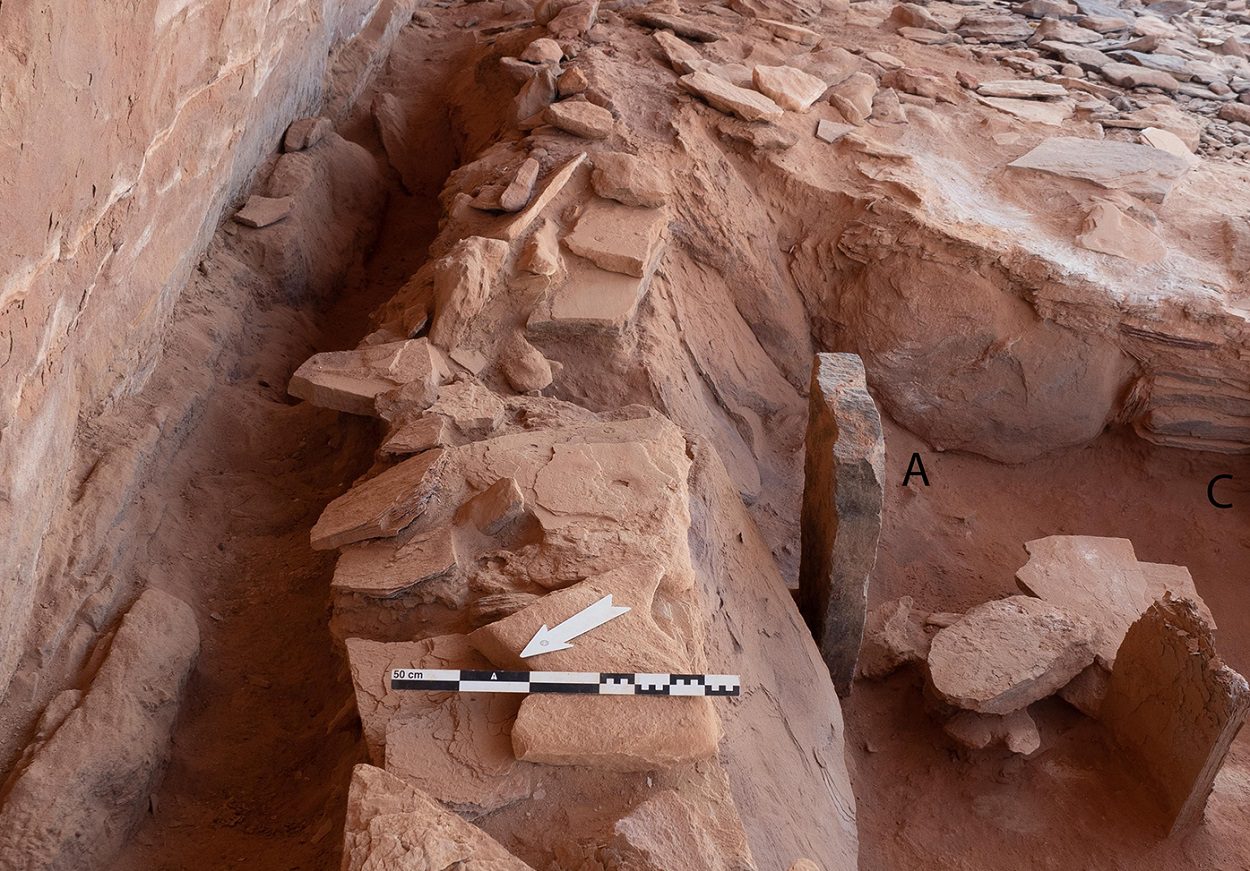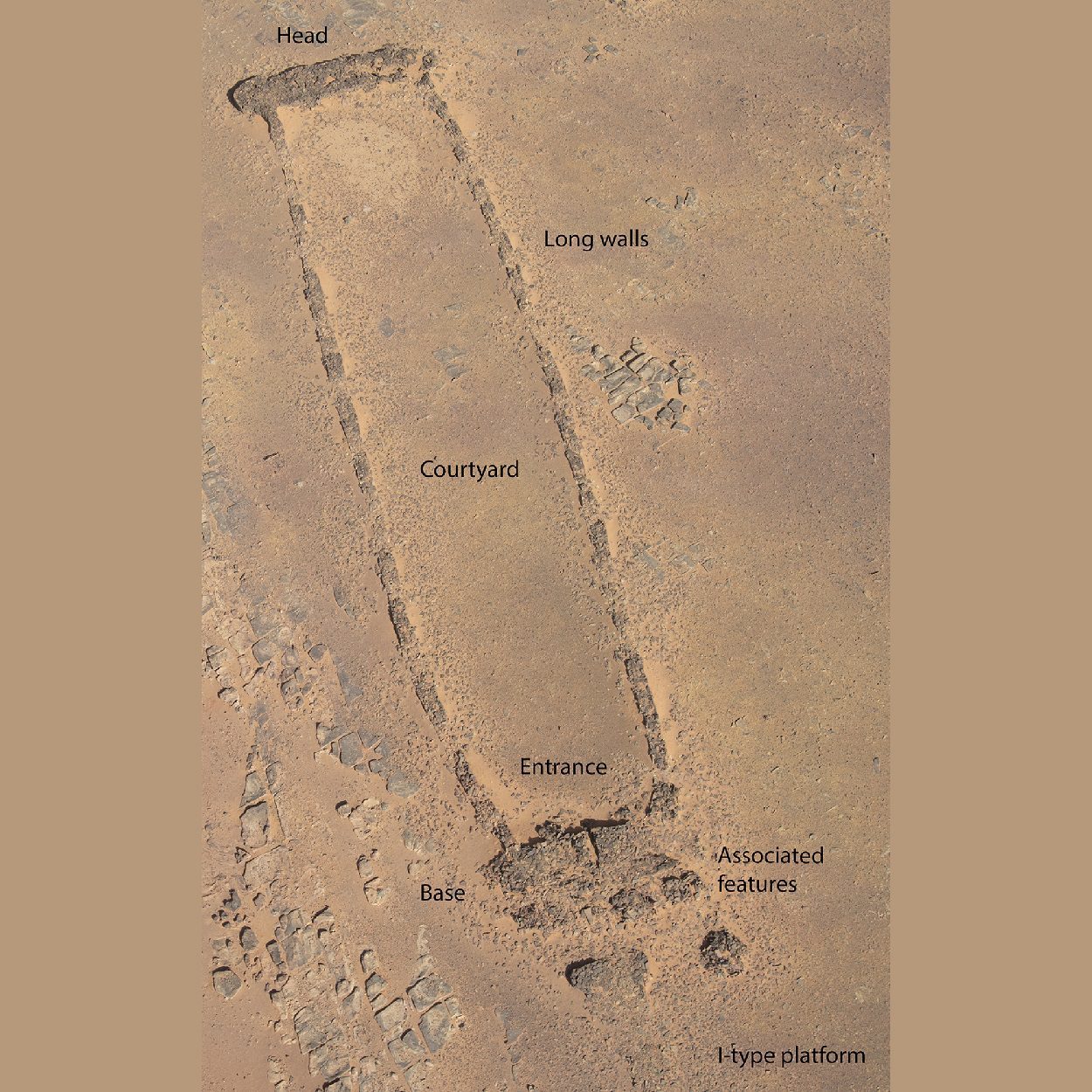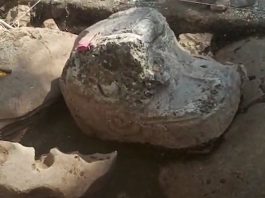A paper published in the journal PLOS ONE, has shed new light on prehistoric monuments known as mustatils found in Saudi Arabia.
The study was conducted by archaeologists from the University of Western Australia, Perth, and colleagues, in conjunction with The Royal Commission for AlUla, in which the researchers have been excavating a mustatil near the city of AlUla.

A mustatil, meaning “rectangle”, typically have walls made from sandstone surrounding a long central courtyard. They range from 20 to over 600 metres in length, with walls that are 1.2 metres high. Over 1,600 mustatils have been identified primarily in northern Saudi Arabia, which were built around 7,000 years ago during the Holocene Humid Phase.
A study of a 140-metre long mustatil near AlUla, suggests that they were used for ritualistic purposes involving placement of animal offerings.
The researchers’ analysis included identification of 260 fragments of animal skulls and horns, primarily from domestic cattle, as well as from domestic goats, gazelle, and small ruminants.

 100vw, 1250px” data-lazy-src=”https://www.heritagedaily.com/wp-content/uploads/2023/03/mast2.jpg” />Image Credit : Kennedy et al., 2023, PLOS ONE, CC-BY 4.0</p>
<div class='code-block code-block-2' style='margin: 8px auto; text-align: center; display: block; clear: both;'>
<script async src=)
Most of the remains were found clustered next to an upright stone interpreted to be a baetyl. A radiocarbon analysis of the remains indicates that the betyl is one of the earliest identified in the Arabian Peninsula, and the bones provide some of the earliest evidence for domestication of cattle in the northern Arabia.
According to the researchers: “The ritual deposition of animal horns and upper cranial element within the mustatil suggests a profound intersection of belief and economic life-ways in the Late Neolithic of Northern Arabia. The incorporation of these two facets suggests a deeply rooted ideological entanglement, one which was shared over a vast geographic distance, indicating a far more interconnected landscape and culture than had previously been supposed for the Neolithic period in north-west Arabia.”

The team also found evidence of multiple phases of ritual offerings at the mustatil, including the burial of an adult male, suggesting that the site could have been a religious destination for repeated pilgrimages.
Src: heritagedaily.com








